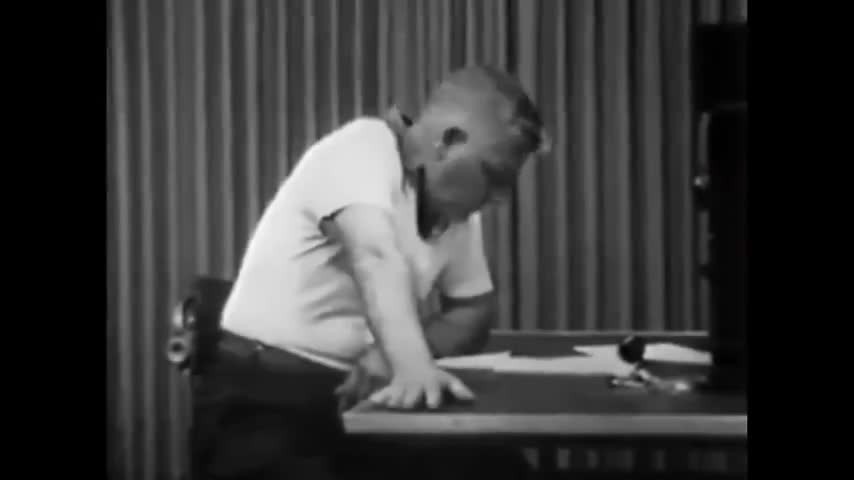Premium Only Content

Obedience - The Milgram Experiment
Milgram experiment
From Wikipedia, the free encyclopedia
For Milgram's other well-known experiment, see Small-world experiment.
"Obedience to Authority" redirects here. For the book, see Obedience to Authority: An Experimental View.
The experimenter (E) orders the teacher (T), the subject of the experiment, to give what the teacher (T) believes are painful electric shocks to a learner (L), who is actually an actor and confederate. The subject is led to believe that for each wrong answer, the learner was receiving actual electric shocks, though in reality there were no such punishments. Being separated from the subject, the confederate set up a tape recorder integrated with the electro-shock generator, which played pre-recorded sounds for each shock level.[1]
The Milgram experiment(s) on obedience to authority figures was a series of social psychology experiments conducted by Yale University psychologist Stanley Milgram. They measured the willingness of study participants, men 20–50 years old from a diverse range of occupations with varying levels of education, to obey an authority figure who instructed them to perform acts conflicting with their personal conscience. Participants were led to believe that they were assisting an unrelated experiment, in which they had to administer electric shocks to a "learner". These fake electric shocks gradually increased to levels that would have been fatal had they been real.[2]
The experiment found, unexpectedly, that a very high proportion of subjects would fully obey the instructions, albeit reluctantly. Milgram first described his research in a 1963 article in the Journal of Abnormal and Social Psychology[1] and later discussed his findings in greater depth in his 1974 book, Obedience to Authority: An Experimental View.[3]
The experiments began in July 1961, in the basement of Linsly-Chittenden Hall at Yale University,[4] three months after the start of the trial of German Nazi war criminal Adolf Eichmann in Jerusalem. Milgram devised his psychological study to explain the psychology of genocide and answer the popular contemporary question: "Could it be that Eichmann and his million accomplices in the Holocaust were just following orders? Could we call them all accomplices?"[5] The experiment was repeated many times around the globe, with fairly consistent results.
-
 1:17
1:17
The World We Live In
25 days ago“We don’t have an epidemic of mental illness, we have an epidemic of psychiatry.”
3481 -
 LIVE
LIVE
X22 Report
2 hours agoMr & Mrs X - Tylenol Is The Start, All Roads Lead To The Vaccines, Chatter Amongst Big Pharma - Ep 9
1,444 watching -
 35:24
35:24
The Rubin Report
19 hours agoThe Simple Rules to Fight Crime Blue Cities Choose to Ignore | Jay Collins
22.5K5 -
 LIVE
LIVE
FyrBorne
10 hours ago🔴Warzone M&K Sniping: Modern Warfare Weapons That Still Cook in 2025
4,636 watching -
 17:40
17:40
Actual Justice Warrior
1 day agoBlack Mob ATTACKS Conservatives On Campus
79.7K165 -
 2:04:41
2:04:41
MG Show
23 hours agoJames 'Dirty Cop' Comey Indicted; A Plan to Starve the American People
62.8K21 -
 9:11
9:11
MattMorseTV
19 hours ago $19.42 earnedVance just DROPPED the HAMMER.
147K84 -
 10:16
10:16
GritsGG
19 hours agoBEST Controller Settings for Warzone! Rank 1 Player's Settings!
41.8K4 -
 2:13:30
2:13:30
Side Scrollers Podcast
1 day agoUK Introduces MANDATORY Digital ID + Dallas ICE Shooting BLAMED on Gaming + More | Side Scrollers
163K24 -
 10:34
10:34
The Pascal Show
18 hours ago $7.39 earnedFOOTAGE REVEALED! Images Of Celeste Rivas Exposed Before Her Disappearance From Home Running To D4vd
53.3K3